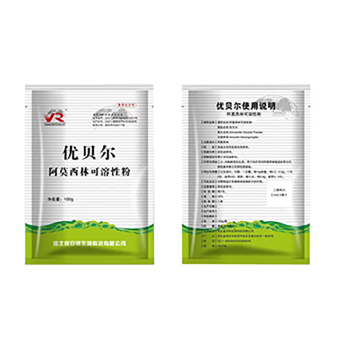- Afrikaans
- Albanian
- Amharic
- Arabic
- Armenian
- Azerbaijani
- Basque
- Belarusian
- Bengali
- Bosnian
- Bulgarian
- Catalan
- Cebuano
- Corsican
- Croatian
- Czech
- Danish
- Dutch
- English
- Esperanto
- Estonian
- Finnish
- French
- Frisian
- Galician
- Georgian
- German
- Greek
- Gujarati
- Haitian Creole
- hausa
- hawaiian
- Hebrew
- Hindi
- Miao
- Hungarian
- Icelandic
- igbo
- Indonesian
- irish
- Italian
- Japanese
- Javanese
- Kannada
- kazakh
- Khmer
- Rwandese
- Korean
- Kurdish
- Kyrgyz
- Lao
- Latin
- Latvian
- Lithuanian
- Luxembourgish
- Macedonian
- Malgashi
- Malay
- Malayalam
- Maltese
- Maori
- Marathi
- Mongolian
- Myanmar
- Nepali
- Norwegian
- Norwegian
- Occitan
- Pashto
- Persian
- Polish
- Portuguese
- Punjabi
- Romanian
- Russian
- Samoan
- Scottish Gaelic
- Serbian
- Sesotho
- Shona
- Sindhi
- Sinhala
- Slovak
- Slovenian
- Somali
- Spanish
- Sundanese
- Swahili
- Swedish
- Tagalog
- Tajik
- Tamil
- Tatar
- Telugu
- Thai
- Turkish
- Turkmen
- Ukrainian
- Urdu
- Uighur
- Uzbek
- Vietnamese
- Welsh
- Bantu
- Yiddish
- Yoruba
- Zulu
9 月 . 15, 2024 14:08 Back to list
albendazole wormer for goats
Understanding the Use of Albendazole as a Dewormer for Goats
Goats are cherished livestock, known for their hardiness and adaptability, but like all animals, they are susceptible to various health challenges, particularly parasitic infestations. One of the most effective treatments against these parasites is Albendazole, a broad-spectrum anthelmintic. Understanding how to use this medication effectively can make a significant difference in the health and productivity of goat herds.
What is Albendazole?
Albendazole is a member of the benzimidazole class of dewormers. It works by inhibiting the formation of microtubules in parasitic cells, effectively disrupting their metabolism and preventing them from reproducing. This makes it effective against a wide range of parasites, including roundworms, tapeworms, and some flukes. Its efficacy has made it a go-to choice for goat farmers dealing with gastro-intestinal and respiratory parasites.
Why Deworm Goats?
Goats are prone to parasitic infections due to their grazing habits and social behaviors, which can lead to high worm loads in a herd. Common parasites include Haemonchus contortus (barber pole worm), Ostertagia ostertagi, and Trichostrongylus species. Heavy infestations can cause anemia, weight loss, decreased milk production, and in severe cases, death. Regular deworming is crucial in maintaining a healthy herd, improving feed efficiency, and ensuring optimum growth rates.
Dosage and Administration
albendazole wormer for goats

When using Albendazole, it is essential to follow the recommended dosage carefully. The standard dosage for goats is typically around 5 mg/kg of body weight, administered as a single oral dose. However, it is vital to read the label or consult a veterinarian for specific dosage instructions, as the concentration of the product may vary. Care should also be taken to treat all animals in the herd simultaneously to prevent re-infestation.
Timing of Deworming
Timing can significantly affect the outcome of treatment. In many regions, the best time to deworm goats is during the spring and fall, particularly in areas where strongyles are prevalent. It is essential to assess the parasite burden before deworming, which can be done by performing fecal egg counts. This helps tailor the treatment schedule and reduce the potential for drug resistance.
Withdrawal Times
Another important aspect of using Albendazole is understanding withdrawal times. Goats that are treated with Albendazole should not be slaughtered for human consumption for a specified period after treatment. Typically, this withdrawal period is around 30 days, but it is always advisable to check the manufacturer's guidelines to ensure compliance with food safety regulations.
Conclusion
Albendazole is a valuable tool in the management of parasitic infections in goats. By understanding its mechanism, appropriate dosage, timing for administration, and withdrawal periods, goat farmers can significantly improve their animals' health and productivity. Regular monitoring and a strategic deworming schedule will ensure that goats remain healthy and productive, enabling farmers to reap the full benefits of their herds. As always, working closely with a veterinarian can help ensure that the right measures are in place for effective parasite control.
-
The Power of Radix Isatidis Extract for Your Health and Wellness
NewsOct.29,2024
-
Neomycin Sulfate Soluble Powder: A Versatile Solution for Pet Health
NewsOct.29,2024
-
Lincomycin Hydrochloride Soluble Powder – The Essential Solution
NewsOct.29,2024
-
Garamycin Gentamicin Sulfate for Effective Infection Control
NewsOct.29,2024
-
Doxycycline Hyclate Soluble Powder: Your Antibiotic Needs
NewsOct.29,2024
-
Tilmicosin Premix: The Ultimate Solution for Poultry Health
NewsOct.29,2024













